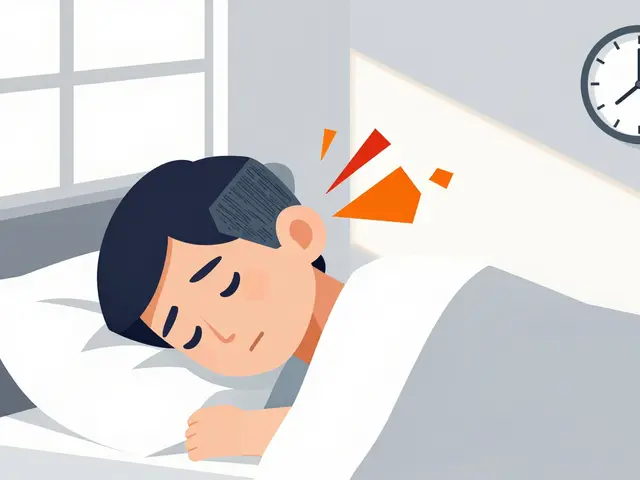Sleep for Multiple Myeloma: Why It Matters
When dealing with Sleep for Multiple Myeloma, the quality of rest that a person with multiple myeloma gets each night, the impact goes far beyond feeling rested. Good sleep can help the immune system, ease pain, and improve mood, while poor sleep often worsens treatment side‑effects. Also known as Multiple Myeloma, a blood‑cancer that attacks plasma cells in the bone marrow, this disease brings unique challenges that make sleep a critical part of the overall care plan.
Multiple myeloma itself creates a cascade of symptoms that directly disrupt sleep. Bone pain, frequent nighttime urination, and anemia are common, and each can pull a patient out of deep rest. On top of that, the disease often forces patients into long hospital stays or nightly medication schedules, which fragment sleep cycles. Understanding sleep for multiple myeloma means seeing how the disease, its treatments, and daily habits weave together to affect rest.
Key Areas to Focus On
One of the first related entities to look at is Sleep Hygiene, a set of habits that promote consistent, high‑quality sleep. Simple steps like keeping the bedroom dark, limiting caffeine after noon, and establishing a regular bedtime can shave minutes off the time it takes to fall asleep. In multiple myeloma patients, consistent sleep hygiene often counteracts the jittery feelings caused by steroids or the lingering aches after a chemo session.
Another crucial piece is Fatigue Management, strategies to reduce cancer‑related tiredness and boost daytime energy. Fatigue isn’t just feeling sleepy; it’s a deep, draining exhaustion that standard rest can’t fix. Techniques such as short, scheduled naps, light‑intensity exercise, and balanced nutrition can lower overall fatigue levels, which in turn makes it easier to fall asleep and stay asleep.
Medication side‑effects form a direct link between multiple myeloma treatment and sleep disruption. Corticosteroids, often prescribed to control inflammation, can trigger insomnia or vivid dreams. Neuropathic pain from nerve damage may flare up at night, leading to frequent awakenings. Recognizing these drug‑induced patterns lets patients and caregivers adjust dosing times or add supportive meds, preserving precious sleep windows.
Supportive care services, such as oncology‑led sleep clinics or counseling, represent an entity that ties all the other pieces together. These programs can provide personalized sleep assessments, prescribe melatonin when appropriate, and teach relaxation techniques like deep breathing or guided imagery. When patients tap into professional support, they often see a measurable improvement in sleep efficiency and overall quality of life.
Beyond medical interventions, lifestyle factors play a surprisingly big role. A diet low in sugar and high in protein helps maintain stable blood glucose, preventing midnight energy spikes. Light exercise—walking, gentle yoga, or stretching—has been shown to reduce bone pain and improve sleep depth. Even simple mindfulness practices before bed can calm the nervous system, making it easier to transition into restorative sleep.
Putting all these elements together creates a roadmap for better rest. Expect to read articles that dive deeper into each subtopic: how to craft a bedtime routine, ways to manage steroid‑induced insomnia, pain‑relief techniques, and the latest supportive‑care options. By the end of this collection, you’ll have a toolbox of actionable steps that turn sleepless nights into a manageable part of the multiple myeloma journey.
Discover practical sleep tips for multiple myeloma patients, covering pain management, sleep hygiene, safe aids like melatonin, and quick‑reference strategies for restful nights.
Continue reading...






